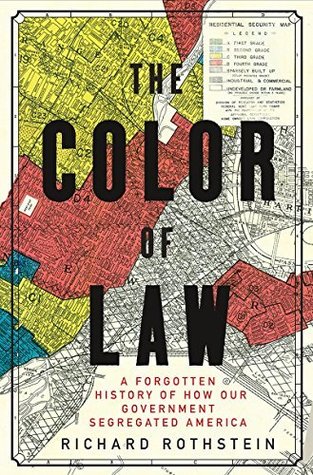More on this book
Community
Kindle Notes & Highlights
Started reading
January 25, 2022
Calling itself the Peninsula Housing Association of Palo Alto, the co-op purchased a 260-acre ranch adjacent to the Stanford campus and planned to build 400 houses as well as shared recreational facilities, a shopping area, a gas station, and a restaurant on commonly owned land. But banks would not finance construction costs nor issue mortgages to the co-op or to its members without government approval, and the FHA would not insure loans to a cooperative that included African American members. The cooperative’s board of directors, including Stegner, recommended against complying with the
...more
This highlight has been truncated due to consecutive passage length restrictions.
Despite the neighborhood’s biracial history, the PWA constructed two segregated projects, one for African Americans (the Outhwaite Homes) and one for whites (the Cedar-Central apartments). Although there previously had been ethnic and racial clusters in the neighborhood, the PWA solidified its racial segregation.
The New Orleans NAACP chapter protested the creation of a segregated housing development. The agency ignored the protest, and the development eventually consisted of one thousand homes for African Americans only, surrounding a park and golf course and adjoining a similar FHA-insured development for whites only. In 1955 an FHA spokesman toured fifty cities where he addressed African American audiences, boasting of New Orleans’s achievements and telling his listeners that such segregated projects were “the type of thing [the] FHA wanted.” A pattern emerges from these examples. Government’s
...more
This highlight has been truncated due to consecutive passage length restrictions.
AS EARLY as the nineteenth century, deeds in Brookline, Massachusetts, forbade resale of property to “any negro or native of Ireland.” Such provisions spread throughout the country in the 1920s as the preferred means to evade the Supreme Court’s 1917 Buchanan racial zoning decision.
In 1953, the Supreme Court ended this circumvention of Shelley. It ruled that the Fourteenth Amendment precluded state courts not only from evicting African Americans from homes purchased in defiance of a restrictive covenant but also from adjudicating suits to recover damages from property owners who made such sales. Still, the Court refused to declare that such private contracts were unlawful or even that county clerks should be prohibited from accepting deeds that included them. It took another nineteen years before a federal appeals court ruled that the covenants themselves violated the
...more
The Supreme Court decision in Shelley v. Kraemer, banning court enforcement of restrictive covenants, had been unanimous, 6–0. Three of the nine justices excused themselves from participating because their objectivity might have been challenged—there were racial restrictions covering the homes in which they lived.
Home purchases should get protection just as with the freedom of speech maybe as its own amendment, no seller may be forced to make a sale public or face penalty for selling ei property to an anonymous buyer.
Speculators also took out real estate advertisements in African American newspapers, even if the featured properties were not for sale. The ads’ purpose was to attract potential African American buyers to walk around white areas that were targeted for blockbusting. In a 1962 Saturday Evening Post article, an agent (using the pseudonym “Norris Vitchek”) claimed to have arranged house burglaries in white communities to scare neighbors into believing that their communities were becoming unsafe.
Known as contract sales, these agreements usually provided that ownership would transfer to purchasers after fifteen or twenty years, but if a single monthly payment was late, the speculator could evict the would-be owner, who had accumulated no equity. The inflated sale prices made it all the more likely that payment would not be on time.


